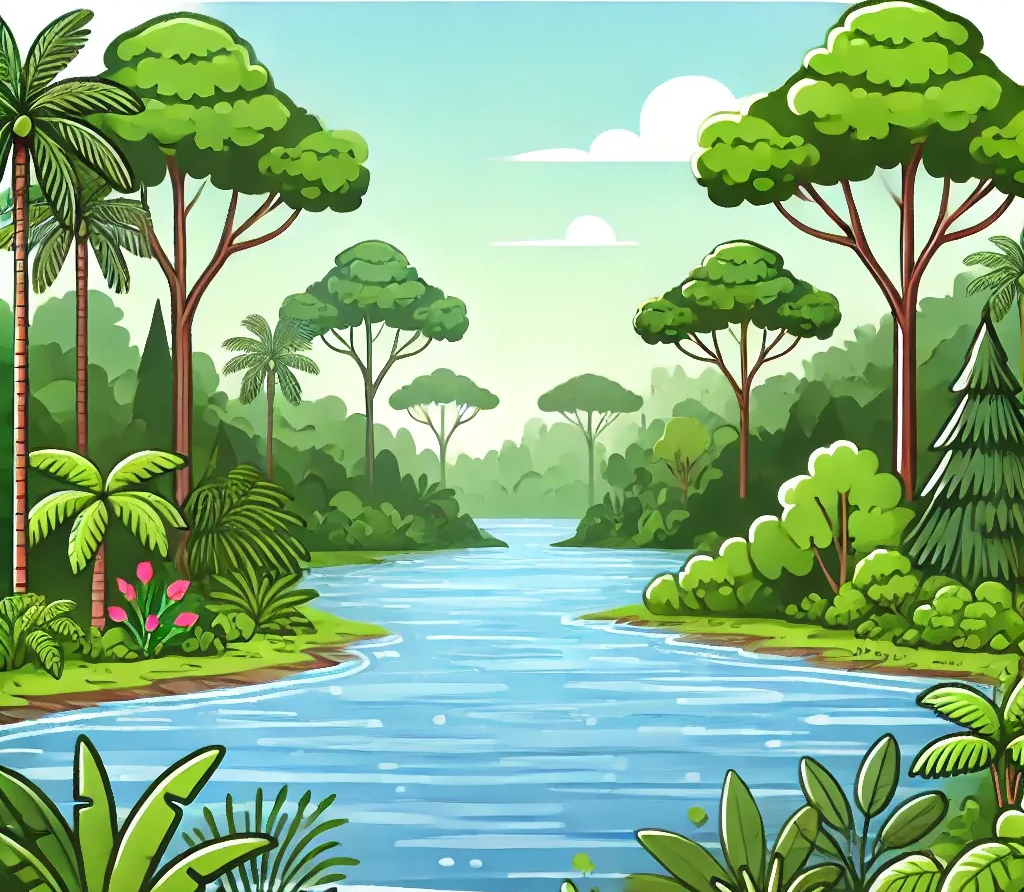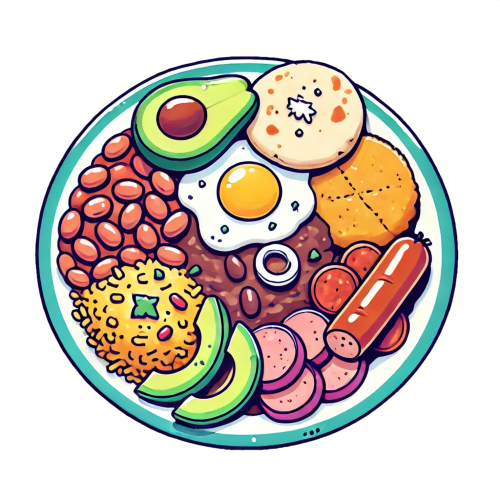THE RECYCLE DIARIES - CHAPTER ONE
Puerto Limón
Puerto Limón isn’t on the tourist map, but then true places rarely are. It sits on the banks of Rio Caqutea, circled by thick jungle in such a way that it appears to my eye, and probably this is how it all began, as a mere clearing in the rainforest. Albeit, one that has grown into the collection of humble buildings I see today. I have travelled here by coach from Bogotá, a gruelling trek of potholes, narrowing tracks, and lengthy stops for sustenance and ablutions. The river, Rio Caqutea, as it is known here, takes an even longer journey as it cuts its way through the dense landscape deep into Brazil. There it is known as the Japurá River. It is just as my companion describes it, grande y marron, big and brown.
A poet he is not.
“Llámenme Jiménez. Con poco dinero y sin esperanza para el futuro, me encontré persiguiendo una bestia.”
“Call me Jiménez.” He writes, “With little money and no hope for the future, I found myself in pursuit of a beast.”
A beast, una bestia. The book I carry with me on my journey is a collection of autobiographical tales by a man whose name is known only because of this opening line. The book recounts a period in his life in the mid 1960s when he travelled from his home in Colombia to fulfil an ambition to fight with Che Guevara in Bolivia, in Cordillera to be more precise. It is a book which has inspired me to follow the same path, though as a travel writer rather than a communist, un periodista de viajes, no un comunista.
And so I begin, as you do, and as Jiménez did, in Puerto Limón on the banks of Rio Caqutea. And where, of course, he and we will meet the beast in question.
THE TOWN
“Ah! La morsa, el burro del río.”
This is the beast he talks of, one that Jiménez recounts had knocked him and all his possessions off a boat into the muddy waters of the Rio Caqutea. A beast he has committed himself to slaying in retribution. “Ah! The walrus…” he says, “…the donkey of the river.”
As I said, a poet he is not.
And while the river is much the same now as it was for him, the buildings have certainly changed from what they were in 1966. Then a few wooden huts flanking a jetty, now a small complex of gravel and mud streets lined by corrugated metal boxes and a mixture of small brick dwellings. So similar are these buildings, whether homes or businesses, a mechanic, a café, that to the infantile eye of a tourist I can only discern them by their colours. Like buildings scattered on a Monopoly board, the dwellings of Puerto Limón are identical in shape and style, painted in solid colours of blues and reds and greens and pinks.
Jiménez, having lost all he had in the attack by the strange creature (la morsa, as he describes it, the walrus), borrows a raft and takes to the river with a sweep oar and a machete. So, must we. But first refreshments. Before he ventured back into the waters of Rio Caqutea, Jiménez found a small eatery near Parque Central, a sweet little town square with lush plantings and communal areas for socialising and relaxing. This town square is much as he described it, but I cannot ascertain where he ate, so we must make do with a café I find of no name. It serves me a lunch of rice and beans with the flesh of what I hope is a river fish. The food is actually good, rustic and simple in its appearance, slightly spiced and filling. It is exactly what a traveller needs. There are other offerings on the menu too, arepas and empanadas, but I eat what the locals appear to be eating as they look at me with suspicious eyes. Their beer is decent too, cheap and cold.
THE BOAT
La morsa, I think to myself. What did he find out there in the river? Or what found him is perhaps the question.
At Parque Central I meet a skinny man with two tone shoes. He has agreed to rent me/us his fishing boat for an appropriate fee, with a little extra for the use of his machete, and no further questions. Now we are ready to hunt una bestia, the beast, the so-called donkey of the river. The man gives me a key which will unlock the chain fastening his boat to a tree at the water’s edge. With a few directions I make my way from the pretty plaza in the centre, down increasingly scruffier streets. It is as if the poverty of Puerto Limón’s inhabitants is correlated to their relative position to the town square, an ever-decreasing circle of sorts. Each step away from the centre, so well designed and well maintained, brings me closer to the reality of life for many people out here. It looks like a hard life, and I wonder whether things have improved since the day Jiménez passed through.
I pass the Instituto Colombiano de Bienestar Familiar, its wall marked boldly with ICBF. It is the government agency that protects children from harm and abuse in Colombia. There is an image of Mickey Mouse on its street-facing wall, now scratched and aged, which was intended no doubt to put a smile on the children who are escorted through its doors. I make my way to the river quickly as locals watch me walk their roads and pass their homes. I am an imposter. We are imposing. But not for long.
As the man described, his boat is at the end of a short track, chained to a tree with the front half bobbing in the shallows of the great Rio Caqutea. It appears keen for adventure. Once the boat is untethered, we can now make our way into the main body of the river, the motor behind us ticking over with a gentle hum and the fumes of a miniature industry.
At last, I can pull the machete out from inside my jacket.
The currents are strong but our boat pushes onwards west, past small islands and outcrops, the thick vegetation on each side of the river making us feel cocooned and exposed in equal measure. The book describes where our guide faced the beast in vengeance:
“…el río se divide en muchas partes, vías fluviales que son estrechas y oscuras…”
He says the river splits into many parts, the water narrow and dark. I see it too now I am perhaps 20 minutes from Puerto Limón where the shoreline becomes rockier, almost beach-like, and as the river separates and rejoins at random intervals. The river is busy in a sedate way. There are long red boats, four or five seats in their length, ferrying people across the river, transporting all manner of goods, even vehicles. The river is everything in this part of the world, a means to life. Locals appear to know every inch too, unlike me who regularly scrapes the boat in the shallows and on fallen trees hidden in the murky waters.
THE BEAST
Nightfall comes and allows us to hide on a rocky area at the water’s edge, partially camouflaged by the broad and itchy leaves of the river ferns. We wait for the donkey of the river.
The waters are abandoned once the sun sets, a few lights and campfires flicker through the black foliage on the far side of the river. I am certain that I am concealed, just as Jiménez was as he lay for two days in patient alert waiting for the creature that attacked him. Did he wait exactly here as we do? Are we as committed to the task as he was? Luckily for us our wait is not as long, una bestia has emerged from the thick to drink from the great Rio Caqutea.
It is dark, of course, so only the broken moonlight reflecting and bouncing around the shoreline helps me see the animal’s frame. It is shaped like a walrus, a heavy-set trunk of a body, deep vocal grunts as it drinks, tusk-like protrusions from its face. But a walrus it is not. The lurching creature has legs, four short, pig-like pegs that struggle to hold up its ferocious physique. I freeze. My keenness for adventure, my fidelity to my companion’s journey has been replaced by cold fear.
But with a deep breath our resolve returns. Now for a bit of action after dark.
I pounce forward and with the machete I take violent swipes at the beast. It squills and thrashes, but we are inspired to be persistent, spurred on by the epic journey of Jiménez and committed to treading as and where he once tread. I feel the warm blood flick onto my skin. The creature is dead.
Now we can return to town for dinner.
NIGHTLIFE
Puerto Limón is humming at night, the warm air and pleasantness of the late evening brings most of its citizens out for food and entertainment. I find myself in a small restaurant, the Restaurante Escola, where young people learn their culinary skills and the means to serve tourists their food in the manner they expect it. From the outside it looks not much more than a cattle shed, red brick walls with iron bars instead of windows, but the crude design of the building is perfect for humid nights allowing both the feel of intimacy and alfresco.
I am served the Bandeja Paisa, a pleasant collection of local fruits and vegetables with a rice-bean-meat dish as its centrepiece. As I eat, there is a line of women all in white, the laughter, their dancing to samba beats played loud on a car stereo. The night shrouds the poverty of the place, it acts as an equaliser, so for the evening I am as they are. There are police here too, dressed in military style and armed for siege combat, it seems. The blood is washed off me, so I have no concerns.
Under a streetlight it appears as if the Colonel’s standing in the sun, the portal of light reminding everyone that darkness only hides the inequality, it does not counter it. It is a town that is telling me something, but not something I can fully define yet.
CONCLUSION
My/our time has been pleasant, though I suspect Puerto Limón is a little too far for most travellers to visit. But should you venture this way, as I have and as Jiménez did, you’ll find the food pleasing and cheap and the nightlife buzzing enough. But avoid the river.
“Soy el ganador, y el ganador sigue adelante.”
“I am the winner,” he says, “And the winner moves on”
